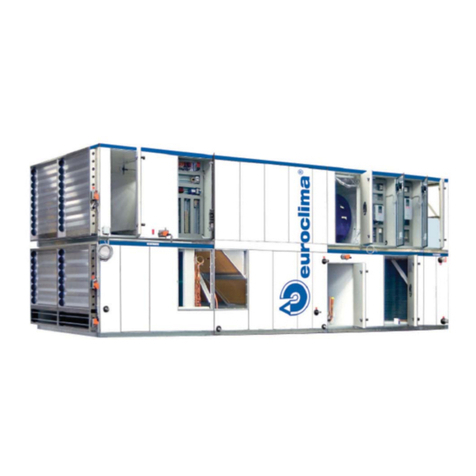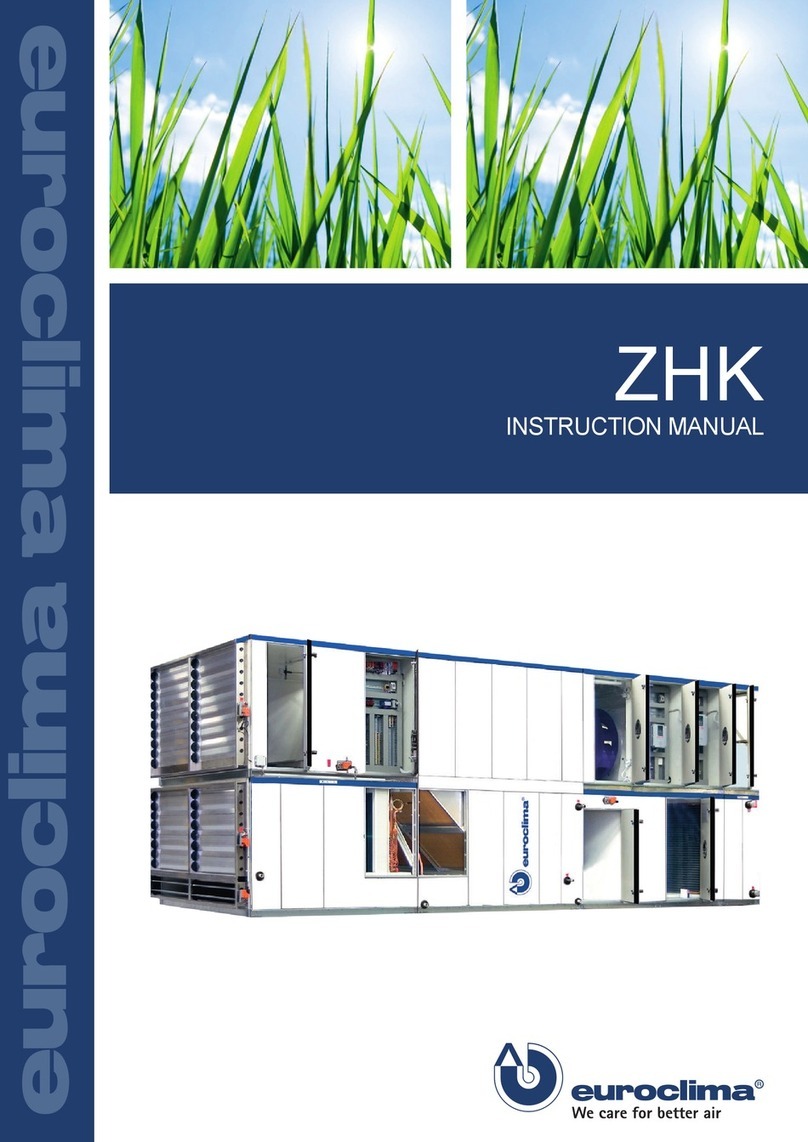
instruction and operation manual ZHK NANO
68 / 116 V04-18
In the night setback mode, the rooms can be cooled with the cool outdoor air outside normal work-
ing hours; all heating batteries, cooling batteries, recovery systems, humidity and air quality control
are disabled. The setting is made in the menu Night setback, which can be entered directly.
If a room unit or remote switch is connected, the airflow can be changed via this with a correspond-
ing configuration (offset).
6 SSO\DLUIORZUDWHIRUHFRQRP\PRGH
+DOIQRPLQDODLUIORZ
UDWH
6 SSO\DLUIORZUDWHIRUFRPIRUWPRGH
5HW UQDLUIORZUDWHIRUHFRQRP\PRGH
+DOIQRPLQDODLUIORZ
UDWH
5HW UQDLUIORZUDWHIRUFRPIRUWPRGH
& UUHQWV SSO\DLUIORZUDWHVHWSRLQW
& UUHQWUHW UQDLUIORZUDWHVHWSRLQW
Table 8: Airflow rate setpoints
The setpoints for night setback, air quality and humidity control can be found in the chapters night
setback (14.5 Night setback), air quality control (14.4.1.3 Fan speed) and humidity control
(14.4.1.1 CO2 sensor).
Pressure control
When the fans are controlled by the duct pressure, the required pressure setpoint is set at commis-
sioning separately for supply and return air and is equal for economy and comfort mode. This is
visible, but can be changed only by service personnel. The current air flow rate is always visible on
the main page.
An air quality control or dehumidification is not possible, because the amount of air cannot be
changed and depends only on the external duct pressure.
If air quality control is provided by means of duct pressure, the maximum duct pressure can also
be set at poor air quality. The resulting duct pressure is then the maximum of the setpoint for econ-
omy / comfort mode and air quality control. Thus, the selected duct pressure is always maintained
and increased due to poor air quality. The setting is made in the menu "air quality", which can be
entered directly.
If the dehumidification is activated by means of duct pressure, the maximum duct pressure can
also be set at high humidity. The resulting duct pressure is then the maximum of the setpoint for
economy / comfort mode and dehumidification control. Thus, the selected duct pressure is always
maintained and increased due to high room humidity. The setting is made in the menu "humidity",
which can be entered directly.
6 SSO\DLUG FWSUHVV UHVHWSRLQW
5HW UQDLUG FWSUHVV UHVHWSRLQW
Table 9: Duct pressure setpoints





























